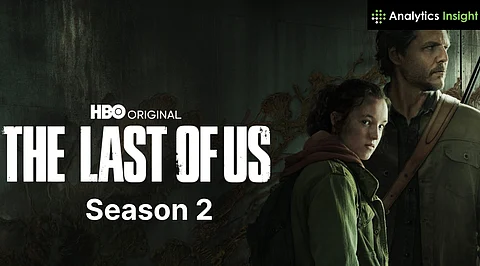

Bella Ramsey brings a softer, more vulnerable side to Ellie while still retaining her emotional intensity.
Kaitlyn Dever’s Abby adds complexity and empathy early in the season, easing narrative tension.
Supporting characters like Dina, Jesse, and Tommy are fleshed out more than in the game, enriching the emotional backdrop.
With Season 2, HBO’s The Last of Us continues to impress by capturing the emotional essence of its video game counterpart. While the adaptation takes some liberties, the series remains a largely faithful and respectful rendering of one of gaming’s most emotionally complex narratives.
Season 2 tackles several major moments from The Last of Us Part II head-on, preserving their emotional power. Joel’s brutal death, one of the most controversial scenes in gaming, is recreated with unflinching realism. It’s shocking, visceral, and appropriately raw, setting the tone for Ellie’s descent into vengeance.
Other moments, like Ellie and Dina’s dance in Jackson and the serene giraffe encounter, are brought to life with stunning accuracy. These recreations aren’t just fan service; they reflect the showrunners’ commitment to honoring the game’s pivotal emotional beats.
One of the biggest advantages of the television format is the ability to slow down and explore characters with more depth. In Season 2, viewers spend more time with Ellie, Dina, Abby, and even secondary characters like Jesse and Maria. Relationships evolve more gradually and organically.
Abby’s arc, for example, is introduced earlier than in the game. This allows the audience to understand her motivations before she clashes with Ellie. By the time her full backstory unfolds, her actions, while still divisive, feel more humanized and less abrupt.
The game’s nonlinear storytelling was one of its most daring features, but HBO opts for a more linear structure in Season 2. The decision to follow a chronological format proves effective for a weekly television audience. The drama series prevents narrative disorientation and allows viewers to track character evolution more clearly.
By paralleling Ellie and Abby’s arcs instead of splitting them into separate halves, the show encourages a more balanced emotional response. It invites viewers to empathize with both sides of the conflict as events unfold, something that was more challenging for players locked into one perspective at a time.
Also Read: The Last of Us Season 2: 7 Emotional Moments That Will Break Your Heart
While many changes work in favor of the narrative, some have drawn mixed reactions. A few key adjustments include:
Infection mechanics: The show removes airborne spores, opting for a more bite-focused transmission. While this helps with practical filming constraints, some fans feel it dilutes the tension and realism.
Less emphasis on combat: The series trades in lengthy action sequences for psychological and emotional drama. This change serves the format but may leave some viewers missing the tension and danger that combat scenes provided.
Increased verbal exposition: Complex emotions that were previously conveyed through silence or subtle facial expressions in the game are now often explained through dialogue, occasionally undercutting the story’s power.
These alterations make the show more accessible to non-gamers, but in doing so, they sometimes pull away from the ambiguity that made the original so impactful.
Bella Ramsey brings undeniable emotional depth to Ellie, portraying her vulnerability, fear, and rage with authenticity. However, some fans argue that the television version softens Ellie’s edge. Her ruthlessness, especially in later parts of the game, seems slightly diluted, less of the calculating survivor and more of the grieving teen.
Where the game allowed players to live through Ellie’s increasingly brutal decisions without justification, the show occasionally pauses to explain her feelings. While this adds layers to her emotional arc, it can also remove some of the narrative discomfort that made her journey so unforgettable.
The visual and auditory continuity between the game and show is a strong point. The HBO series is an accurate recreation of Seattle’s world, where nature is overgrown and dilapidated. The atmosphere is oppressive and haunting, conveying the dear weight of a broken world grasping onto life.
The soundtrack, built with Gustavo Santaolalla’s return, preserves the melancholy that defines the franchise. Drifting into one quiet moment after another, with Ellie softly strumming Joel’s guitar, space is given for reflection, and the strong emotional throughline is preserved between the game and the series.
This is a big one-for-the-one adaptation; that is very much the show’s strength. The show knows when to keep things true and when to evolve things. The show riskily keeps all elements central to the story: grief, vengeance, love, and the hearty gray of survival.
HBO humanizes both Ellie and Abby. It gives a voice to enriching side characters while rooting its story in emotional realism. This results in a slow, elegant, yet powerful continuation of this adaptation. It serves as a showcase of how storytelling from a video game can not only survive but also grow when handled carefully in its journey to the screen.
Also Read: The Last of Us: Season 2 Finale Review
